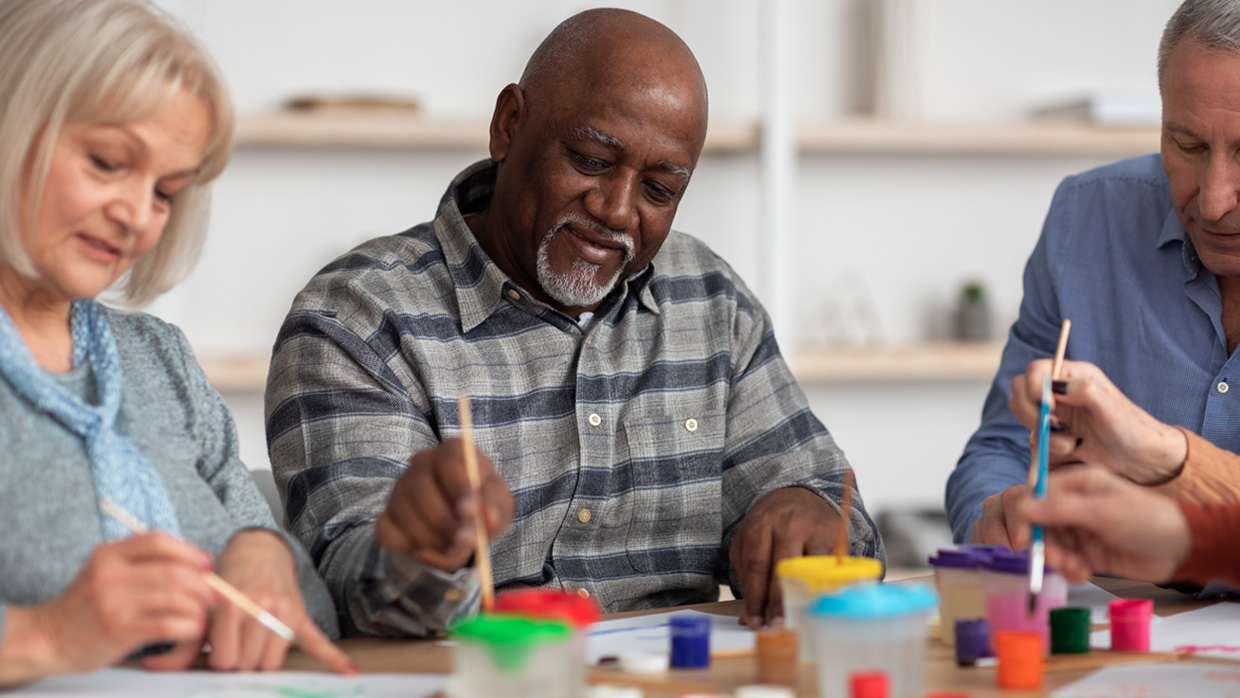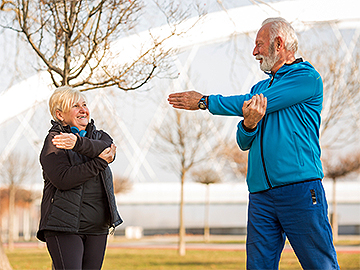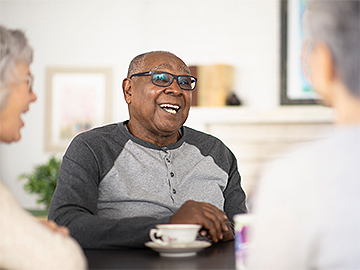Keeping Seniors Active and Engaged During Winter

When the season’s greetings stop and the holiday lights disappear, the realities of winter really set in: Cold temperatures, snowy sidewalks, bitter windchills and overcast skies can deter even the most active and extroverted people. In particular, winter often ushers in a time of physical inactivity and disengagement for seniors. But physical activity is especially important for seniors to help maintain and improve their flexibility, strength, and balance and reduce their risk of chronic diseases. And social activities are necessary to prevent seniors from feeling isolated and lonely.
Why Physical Activity Is Important
 Beyond the age of 50, there are a number of adverse outcomes associated with being physically inactive. Aging, combined with physical inactivity, accelerates the loss of muscle mass and joint flexibility and increases the risk of weight gain, disease and disability. Sedentary seniors are also at greater risk of falls, depression and diminished brain/memory health. All of this leads to a diminished quality of life and loss of independence. Because frigid temperatures and limited sunshine can give anyone the winter blues, it is especially important to keep seniors engaged and physically active during winter months.
Beyond the age of 50, there are a number of adverse outcomes associated with being physically inactive. Aging, combined with physical inactivity, accelerates the loss of muscle mass and joint flexibility and increases the risk of weight gain, disease and disability. Sedentary seniors are also at greater risk of falls, depression and diminished brain/memory health. All of this leads to a diminished quality of life and loss of independence. Because frigid temperatures and limited sunshine can give anyone the winter blues, it is especially important to keep seniors engaged and physically active during winter months.
Here are some indoor activities that your community can arrange or provide in order to get seniors active during the winter:
- Yoga (standing or sitting)
- Tai Chi
- Planned walking or jogging (indoors or outdoors)
- Dancing
- Pool aerobics
- Stair climbing
- Cycling (on stationary or nonstationary bikes)
- Weight training (with resistance bands or weights)
- Pilates
- Indoor swimming
- Low-impact sports such as bowling, Ping-Pong and golf
Providing Opportunities for Social Engagement
 Providing opportunities for residents to socialize throughout the day is an excellent way to engage residents and help boost their mood. Social engagement is as important for seniors as physical activity. Regular social interaction improves cognitive health, physical health, self-esteem and sleeping patterns. Moreover, seniors who participate in one social activity are more likely to participate in more activities, imbuing a sense of belonging and providing new connections among residents. Activities that your community can organize to increase residents’ socialization include the following:
Providing opportunities for residents to socialize throughout the day is an excellent way to engage residents and help boost their mood. Social engagement is as important for seniors as physical activity. Regular social interaction improves cognitive health, physical health, self-esteem and sleeping patterns. Moreover, seniors who participate in one social activity are more likely to participate in more activities, imbuing a sense of belonging and providing new connections among residents. Activities that your community can organize to increase residents’ socialization include the following:
- Decorate the dining area with seasonal décor to encourage seniors to visit the dining hall for their meals
- Install speakers to play music that seniors know and love
- Arrange dances and dance lessons
- Have game nights (bingo, board games, card games, charades, etc.)
- Organize field trips for five or more residents
- Put on talent shows, including prizes for winners
- Schedule visits from comfort animals (dogs or cats)
With these strategies, communities can persuade and empower seniors to be more physically active and engage regularly with their peers and their surroundings. Residents who are healthy, happy and engaged are more likely to feel good about the communities they live in and the services they receive.